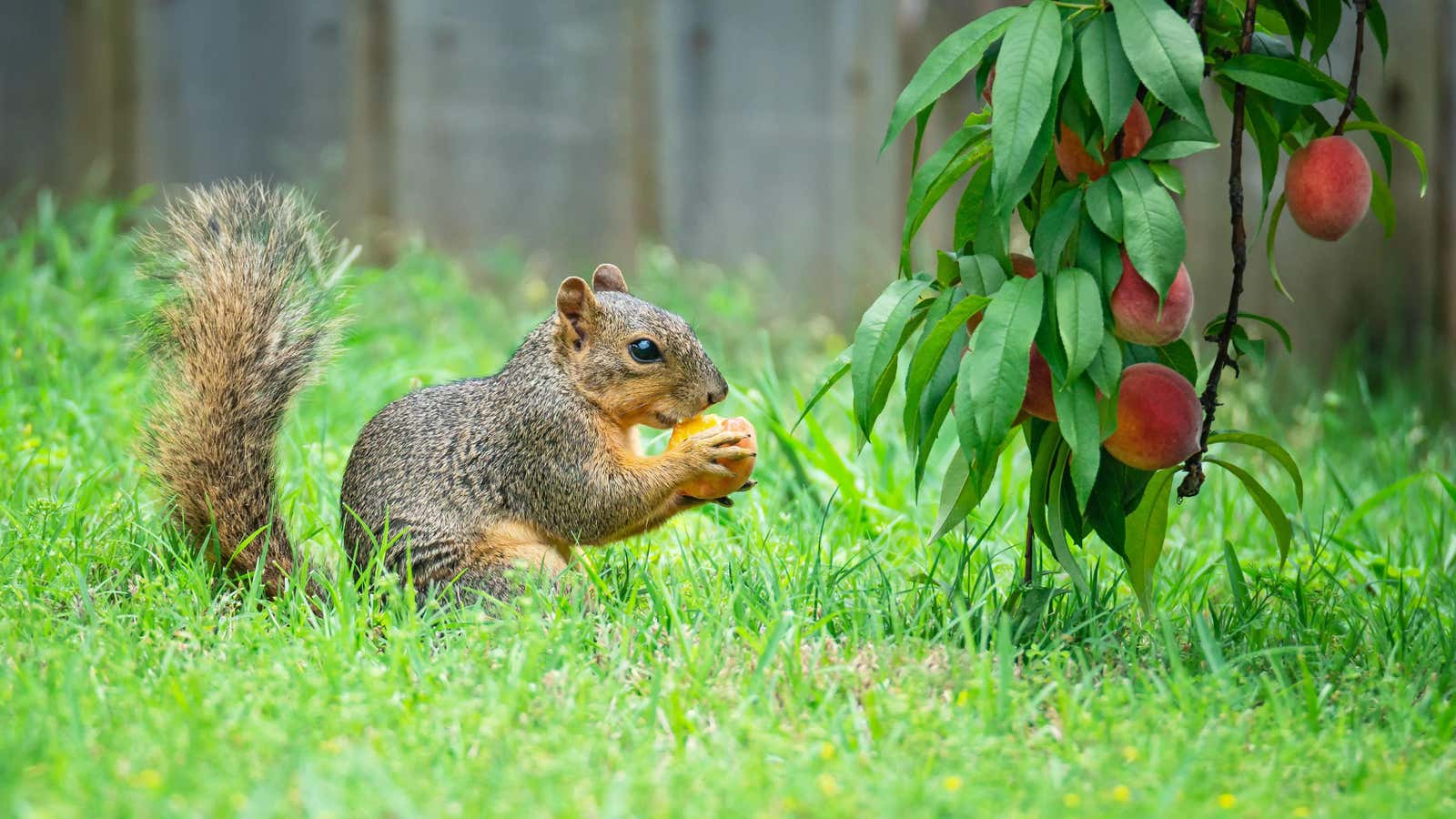Drive Squirrels Out of Your Garden Without Chemicals, Poison or Traps

I used to laugh at my grandparents because they both hated squirrels so much that they went to comically great pains to keep them away from their bird feeders. Now that I have my own garden, I’m starting to understand their obsession with getting rid of those furry tailed horrors. They will eat tender young shoots, seeds, and any vegetables they can find.
There are various ways to dissuade squirrels from using your seedling as a personal eatery: noise devices, fake owls, and flashing lights are all options, but their effectiveness diminishes over time. But there is a solution for a garden ravaged by squirrels, and it’s easier and cheaper than you think.
Use a cheap trash can for small plants
The answer to squirrel problems is an inverted wire wastebasket. Yes, that’s right, trash can. For young plants that need protection from squirrels, all you have to do is place an inverted wire litter basket on top of them. For added security, use tent pegs or landscape garden staples to hold the basket. The mesh of the basket will let in the sun’s rays and rain, but not the squirrels. Their free lunch buffet will run out and your little plants will thrive without being gnawed off by tiny teeth.
Make a big squirrel hedge for big gardens
You may notice a fatal error in this regard: what do you do when your plants outgrow their basket? To keep squirrels from getting close to your large plants, you can use wire mesh and fence posts to make your own mesh fence by placing posts in each corner of your garden bed and stretching the mesh around and on top of it. Use landscape garden staples to pin the bottom edge of the netting to the ground, or bury the netting edge six inches deep (because the squirrels will find any gap they can fit in and then ride into town on your vegetables). If you don’t intend to make your own mesh case, you can also buy ready-made mesh cases , although they are more expensive.
Other materials to protect your garden from squirrels
Garden netting and hoops , cut in half, make an excellent barrier tunnel for squirrels. Cut the hoops in half and place them about every three feet in a row; then stretch the net over the hoops and pin the bottom edge of the net to the ground or bury it.
Basically you want anything that allows light and water to pass through but doesn’t have holes big enough for the squirrel to get through. One thing to consider when choosing a barrier material is that it should have openings large enough to allow pollinators such as bees to pass through.
The great thing about using cages and squirrel cages is that they won’t harm squirrels or other animals. Your squirrel cages can be reused every season and are easy to reconfigure for different garden layouts. As always, just remember to call 811 in the US before digging or driving in fence posts – that way you’ll be sure your local utilities are out of your way.